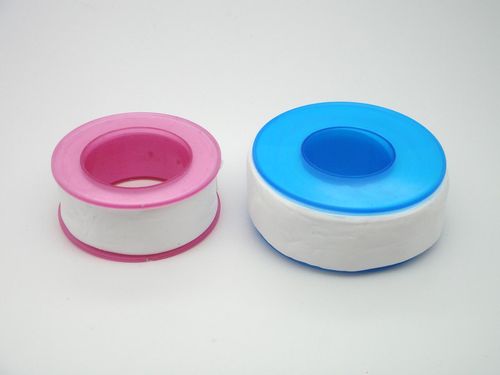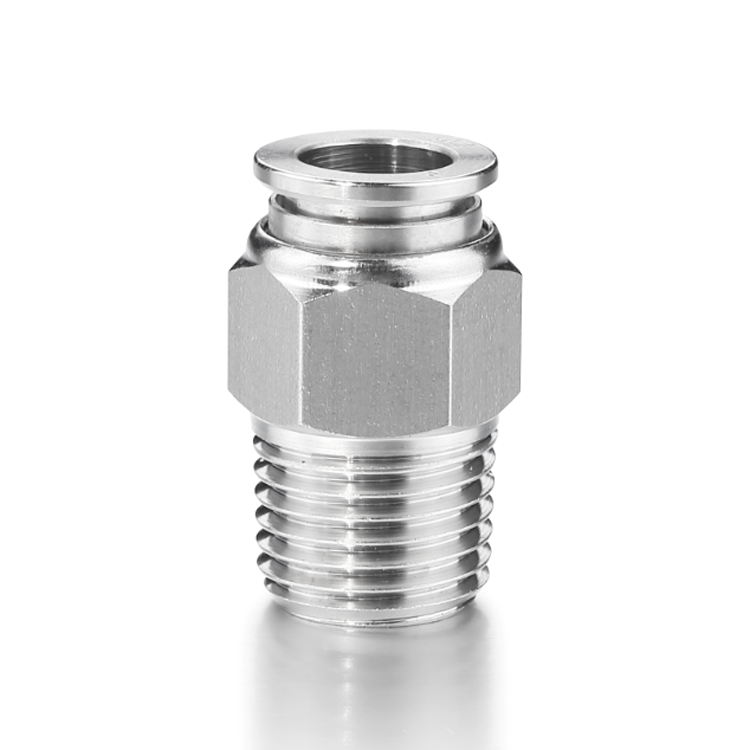When working with plumbing and pneumatic systems, ensuring leak-free connections is paramount. One common question that arises is whether Teflon tape is necessary for stainless steel fittings. This inquiry is not just a matter of preference; it can significantly impact the performance and reliability of your systems. In this article, I will provide a detailed exploration of Teflon tape, its compatibility with stainless steel fittings, and practical insights based on my dozen years of experience in the pneumatic fittings and tubings industry. By the end, you will have a comprehensive understanding of when and how to use Teflon tape effectively, allowing you to make informed decisions without needing to seek further information.
Table of Contents
ToggleWhat Is Teflon Tape?
Teflon tape, also known as PTFE (polytetrafluoroethylene) tape, is a thin, white tape used primarily for sealing threaded connections in plumbing and pneumatic systems. Its unique properties make it an ideal choice for various applications. Teflon tape is chemically inert, meaning it does not react with most substances, and it can withstand a wide range of temperatures, from -450°F to 500°F (-268°C to 260°C). This versatility allows it to be used in both high-pressure and low-pressure systems.
Benefits of Using Teflon Tape
The primary benefits of Teflon tape include:
- Leak Prevention: Teflon tape effectively seals threaded joints, significantly reducing the risk of leaks. This is crucial in pneumatic systems where even a small leak can lead to pressure loss and inefficiency.
- Chemical Resistance: Teflon tape is resistant to many chemicals, making it suitable for applications involving corrosive substances. This property helps protect the integrity of the connection.
- Temperature Tolerance: The tape can withstand high temperatures, ensuring durability in demanding environments. This makes it a reliable choice for various industrial applications.

Why Use Teflon Tape on Fittings?
Understanding how Teflon tape works is essential for recognizing its value in sealing fittings. When applied to threaded connections, Teflon tape fills the microscopic gaps between the threads, creating a barrier that prevents fluid or gas from escaping. This is particularly important in pneumatic systems, where maintaining pressure is critical for optimal performance.
How Teflon Tape Creates a Seal
The sealing mechanism of Teflon tape is based on its ability to conform to the surface of the threads. When you wrap Teflon tape around the threads of a fitting, it compresses slightly as the fitting is tightened. This compression fills any voids or irregularities in the threads, creating a tight seal. The tape also provides a lubricating effect, making it easier to tighten the fitting without damaging the threads.
Scenarios Where Teflon Tape Enhances Performance
Using Teflon tape can enhance the performance of fittings in several scenarios:
- High-Pressure Systems: In systems where pressure is a concern, Teflon tape can provide an extra layer of security against leaks. It helps maintain the integrity of the connection under pressure fluctuations.
- Corrosive Environments: When working with chemicals that may corrode metal, Teflon tape can help protect the integrity of the connection by preventing direct contact between the metal and the corrosive substance.
- Vibration-Prone Applications: In systems subject to vibration, Teflon tape can help maintain a secure seal over time, reducing the risk of loosening and leaks.
Do Stainless Steel Fittings Require Teflon Tape?
The question of whether stainless steel fittings require Teflon tape is nuanced. Stainless steel fittings are designed to create a tight seal on their own, particularly when properly threaded. In many cases, you may find that Teflon tape is not necessary, especially in high-quality stainless steel fittings that are machined to precise tolerances.
Situations Where Teflon Tape May Not Be Necessary
- High-Quality Fittings: If you’re using high-quality stainless steel fittings with well-defined threads, they may seal effectively without Teflon tape. These fittings are often designed to provide a leak-free connection on their own.
- Non-Critical Applications: In applications where leaks are not a significant concern, you might opt to forgo Teflon tape. For example, in low-pressure systems or where the fluid is not hazardous, the risk of leaks may be minimal.
Compatibility of Teflon Tape with Stainless Steel
Teflon tape is generally compatible with stainless steel, but it’s essential to apply it correctly. Over-application can lead to tape debris entering the system, which can cause blockages or other issues. Therefore, if you choose to use Teflon tape, ensure that it is applied sparingly and evenly.
When Should You Use Teflon Tape with Stainless Steel Fittings?
There are specific applications where using Teflon tape with stainless steel fittings is advisable.
Recommended Applications
- Threaded Connections: For threaded stainless steel fittings, especially in high-pressure or corrosive environments, Teflon tape can provide additional sealing assurance. It helps to ensure that the connection remains leak-free under varying conditions.
- Mixed Material Connections: If you are connecting stainless steel fittings to other materials (like PVC or brass), Teflon tape can help ensure a better seal and prevent galvanic corrosion. This is particularly important when dissimilar metals are involved, as they can react with each other and lead to corrosion.

Best Practices for Applying Teflon Tape
To ensure effective sealing with Teflon tape, follow these best practices:
- Clean the Threads: Ensure that the threads are clean and free of debris before applying the tape. Any dirt or old sealant can compromise the seal.
- Wrap the Tape: Apply the tape in the direction of the threads, wrapping it around 2-3 times. Avoid over-wrapping, as this can lead to excess tape that may interfere with the fitting.
- Tighten Securely: After applying the tape, tighten the fitting securely to ensure a proper seal. Be cautious not to overtighten, as this can damage the threads.
Are There Alternatives to Teflon Tape?
While Teflon tape is a popular choice, there are alternatives that may be more suitable for specific applications.
Other Sealing Methods
- Pipe Dope: This is a paste-like sealant that can be applied to threads. It provides a strong seal and is often used in high-pressure applications. Pipe dope can fill gaps more effectively than tape in some cases.
- Anaerobic Sealants: These sealants cure in the absence of air and can provide a robust seal for threaded connections. They are particularly useful in applications where vibration is a concern.
Pros and Cons of Alternatives
- Pipe Dope: Offers a strong seal but can be messier to apply and may require curing time. It can also be more challenging to remove if disassembly is needed.
- Anaerobic Sealants: Provide excellent sealing properties but may not be suitable for all materials. They can also be more expensive than Teflon tape.
Troubleshooting Common Issues with Stainless Steel Fittings
Even with the best practices, issues can arise. Here’s how to troubleshoot common problems.
Identifying Leaks
If you suspect a leak in your stainless steel fittings, look for signs such as:
- Visible Moisture: Check for moisture around the fitting. This is often the first indication of a leak.
- Pressure Drops: Monitor system pressure; a drop may indicate a leak. Use a pressure gauge to help identify any significant changes.
Solutions for Addressing Leaks
- Reapply Teflon Tape: If leaks occur, try reapplying Teflon tape, ensuring it’s done correctly. Make sure to clean the threads before reapplication.
- Check Tightness: Ensure that the fitting is tightened adequately. Sometimes, a simple adjustment can resolve the issue. However, be careful not to overtighten, as this can damage the fitting.
Preventative Measures
To avoid future issues, consider the following:
- Regular Inspections: Periodically check fittings for signs of wear or leaks. Early detection can prevent more significant problems down the line.
- Use Quality Components: Invest in high-quality stainless steel fittings to minimize the risk of leaks. Quality materials often lead to better performance and longevity.
Conclusion
In conclusion, whether you need Teflon tape on stainless steel fittings depends on the specific application and the quality of the fittings used. While Teflon tape can enhance sealing in many scenarios, high-quality stainless steel fittings may not require it. Understanding when and how to use Teflon tape effectively can help you maintain leak-free connections in your plumbing and pneumatic systems.

